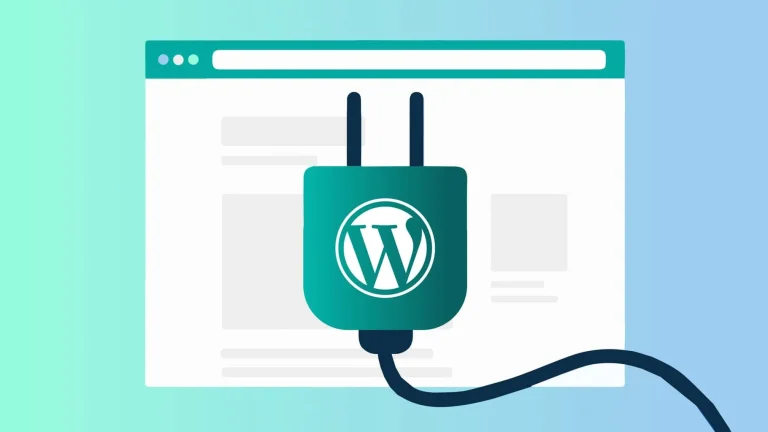How to Build an E-commerce Website?
In today’s digital age, establishing an online presence is paramount for businesses aiming to thrive in the competitive landscape of e-commerce. This comprehensive guide will navigate you through the intricate process of “How to Build an E-commerce Website?” from start to finish. From selecting the right platform to designing an intuitive user interface, we’ll explore the crucial steps and best practices that will set you on the path to e-commerce success. Whether you’re a seasoned entrepreneur or a budding start-up, this guide is your go-to resource for unlocking the potential of online retail. Let’s dive in!
Table of Contents
How to build an e-commerce website
Define your e-commerce business model
Defining your e-commerce business model is foundational to your success. This step involves determining how you will operate your online store and generate revenue. Consider factors such as the products or services you’ll offer, your target market, pricing strategies, and distribution channels. Will you follow a traditional retail model, dropshipping, subscription-based service, or a combination? Understanding your business model will shape your website’s design, marketing strategies, and overall approach to customer engagement. By clearly defining your e-commerce business model, you’ll set a solid foundation for growth and ensure alignment with your long-term goals and objectives.

Choose an e-commerce platform
Choosing the right e-commerce platform is crucial for the success of your online store. With a myriad of options available, it’s essential to consider factors such as scalability, customization capabilities, ease of use, pricing, and integration with other tools and services. Popular e-commerce platforms like Shopify, WooCommerce, Magento, and BigCommerce offer varying features and functionalities to cater to different business needs. Evaluate each platform’s strengths and weaknesses in relation to your specific requirements and objectives. Additionally, consider factors like technical support, security features, and payment gateway options. By carefully selecting the e-commerce platform that aligns with your business goals, you’ll lay a solid foundation for building a successful online store.
Start customizing your website
Once you’ve chosen an e-commerce platform, it’s time to start customizing your website to reflect your brand identity and appeal to your target audience. This step involves selecting a suitable theme or template that aligns with your brand aesthetics and offers the functionality you need. Customize the design elements, such as colors, fonts, and imagery, to create a visually appealing and cohesive storefront. Additionally, configure your website’s navigation, layout, and product categories to enhance user experience and make it easy for customers to find what they’re looking for. Don’t forget to optimize your website for mobile devices to ensure a seamless browsing experience across all screen sizes. By meticulously customizing your website, you’ll create a unique and engaging online presence that attracts and retains customers.
Set up your online store
Setting up your online store is a pivotal step in launching your e-commerce business. Begin by configuring essential components such as product listings, pricing, and inventory management. Organize your products into categories and add detailed descriptions, high-quality images, and relevant attributes to showcase them effectively. Implement secure payment gateways to facilitate seamless transactions and offer various payment options to accommodate customer preferences. Additionally, establish shipping methods and rates to ensure timely delivery and transparency for your customers. Take the time to test your store’s functionality thoroughly to identify and address any potential issues before going live. By meticulously setting up your online store, you’ll create a reliable and user-friendly platform that fosters trust and encourages conversions.

Launch your website
Launching your website is an exciting milestone in your e-commerce journey. Before going live, conduct a comprehensive review to ensure everything is in place and functioning correctly. Double-check product listings, pricing, and payment gateways to ensure accuracy and functionality. Test your website’s responsiveness across different devices and browsers to ensure a seamless user experience. Additionally, implement essential security measures to protect customer data and transactions. Once you’re confident everything is ready, officially launch your website and announce it to your target audience through various channels, such as social media, email newsletters, and press releases. Be prepared to monitor your website’s performance closely and make necessary adjustments to optimize its effectiveness. With a successful launch, you’ll be well-positioned to attract customers and drive sales to your online store.
How much does it cost to create an e-commerce website
The cost of creating an e-commerce website can vary significantly depending on various factors such as the complexity of your website, the features and functionalities you require, and the platform you choose. Generally, you can expect to incur expenses for domain registration, web hosting, e-commerce platform fees, website design and development, payment gateway integration, security measures, and ongoing maintenance and support. Basic e-commerce websites can cost anywhere from a few hundred to a few thousand dollars, while more complex and customized websites can range from several thousand to tens of thousands of dollars or more. It’s essential to carefully consider your budget and requirements when planning your e-commerce website to ensure you invest in the necessary features and functionalities to meet your business goals.
E-commerce website tips
When building your e-commerce website, prioritize user experience by ensuring easy navigation, intuitive design, and mobile responsiveness. Optimize product pages with high-quality images, detailed descriptions, and customer reviews to enhance trust and conversions. Implement robust security measures to protect customer data and transactions. Simplify the checkout process to minimize cart abandonment and offer various payment options for customer convenience. Regularly update your website with fresh content and promotions to keep customers engaged and encourage repeat visits. Lastly, leverage analytics to track website performance and user behavior, allowing you to make data-driven decisions to improve your e-commerce strategy over time.
Display customer reviews
Displaying customer reviews on your e-commerce website is crucial for building trust and credibility with potential buyers. Authentic reviews provide social proof of your product’s quality and help alleviate any doubts or concerns customers may have. Ensure reviews are prominently featured on product pages, allowing shoppers to easily access and evaluate feedback from previous buyers. Encourage customers to leave reviews by offering incentives or sending follow-up emails post-purchase. Respond promptly to both positive and negative reviews to demonstrate your commitment to customer satisfaction and foster engagement. By showcasing genuine customer feedback, you enhance transparency and reliability, ultimately driving more conversions and building long-term customer loyalty.

Make use of stock images
While stock images can be convenient for filling in visual gaps on your e-commerce website, it’s essential to use them judiciously and selectively. Incorporate stock images that align with your brand identity and product offerings, ensuring they enhance rather than detract from the overall user experience. Where possible, prioritize original and high-quality images of your products to provide an authentic representation to customers. Customize stock images to better fit your website’s aesthetic and messaging, adding value and uniqueness. Additionally, consider investing in professional photography or creating custom graphics to differentiate your brand and evoke a stronger emotional connection with your audience.
Include white space in each webpage
Incorporating ample white space, or negative space, into each webpage of your e-commerce site is essential for enhancing readability, visual clarity, and overall user experience. By strategically utilizing white space, you can create a sense of balance and harmony, allowing elements to breathe and stand out effectively. White space helps guide the user’s eye, facilitating easier navigation and comprehension of content. It also reduces cognitive overload, making it easier for visitors to focus on essential information and calls to action. Additionally, white space can convey a sense of elegance and sophistication, elevating the perceived quality of your brand and products. Therefore, ensure each webpage incorporates sufficient white space for optimal design and usability.
Improve your e-commerce SEO
Improving your e-commerce SEO is crucial for enhancing your website’s visibility and driving organic traffic. Start by conducting keyword research to identify relevant search terms and integrate them naturally into your product titles, descriptions, and metadata. Optimize your website’s architecture and navigation to ensure it’s user-friendly and easy for search engines to crawl. Invest in creating high-quality content, including product descriptions, blog posts, and guides, to attract and engage your target audience. Utilize schema markup to provide search engines with structured data about your products. Additionally, optimize your website’s speed, mobile responsiveness, and security to improve user experience and search engine rankings.
Build a robust online presence
Building a robust online presence is essential for e-commerce success. Start by creating a professional and user-friendly website that showcases your products effectively. Utilize social media platforms to engage with your audience, share valuable content, and drive traffic to your site. Implement email marketing campaigns to nurture leads and encourage repeat purchases. Collaborate with influencers and industry partners to expand your reach and credibility. Invest in search engine optimization (SEO) to improve your website’s visibility in search engine results. Monitor and analyze your online presence regularly, adjusting strategies as needed to stay competitive and relevant in your industry. By taking a comprehensive approach, you can establish a strong online presence that attracts and retains customers.
Stay abreast of e-commerce trends
Staying abreast of e-commerce trends is crucial for maintaining competitiveness and relevance in the digital marketplace. Regularly monitor industry publications, attend conferences, and participate in webinars to stay informed about emerging trends and technologies. Keep a close eye on consumer behavior and preferences, as well as advancements in online shopping platforms and payment solutions. Embrace innovations such as augmented reality shopping experiences, voice commerce, and social commerce to enhance the customer journey and drive sales. By staying informed and proactive, you can adapt your e-commerce strategies to capitalize on emerging trends and maintain a competitive edge in the rapidly evolving digital landscape.
conclusion
In conclusion, building an e-commerce website requires careful planning, strategic execution, and continuous refinement. By defining your business model, selecting the right platform, customizing your website, and launching with a strong online presence, you can create a successful e-commerce venture. Additionally, focusing on SEO, customer reviews, stock images, white space, and staying updated on industry trends will help you stay competitive and meet the evolving needs of your customers. Remember to prioritize user experience, optimize for mobile devices, and provide excellent customer service to drive engagement and conversions. With dedication and attention to detail, you can build a thriving e-commerce business that resonates with your target audience.
Read More What Is a Meta Description? How to Write Meta Description
FAQ’S
What are the benefits of having an e-commerce website?
An e-commerce website enables businesses to reach a global audience, operate 24/7, reduce overhead costs, track customer behavior, and offer personalized shopping experiences.
How long does it take to build an e-commerce website?
The time to build an e-commerce website varies depending on factors such as complexity, customization requirements, and the chosen platform. It can take anywhere from a few weeks to several months.
How can I optimize my e-commerce website for search engines?
To optimize your e-commerce website for search engines, focus on keyword research, optimize product pages with relevant keywords, improve site speed and mobile-friendliness, create high-quality content, build backlinks, and regularly monitor and analyze performance metrics.






